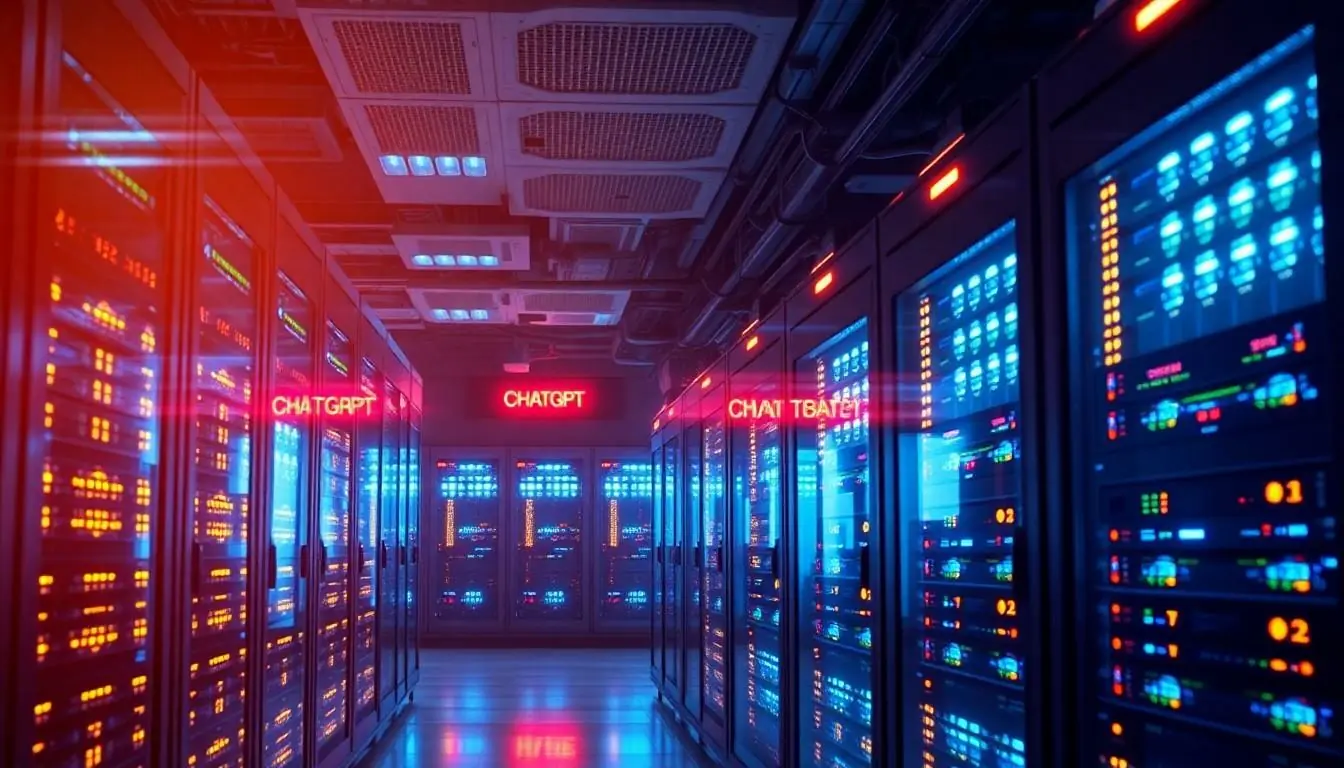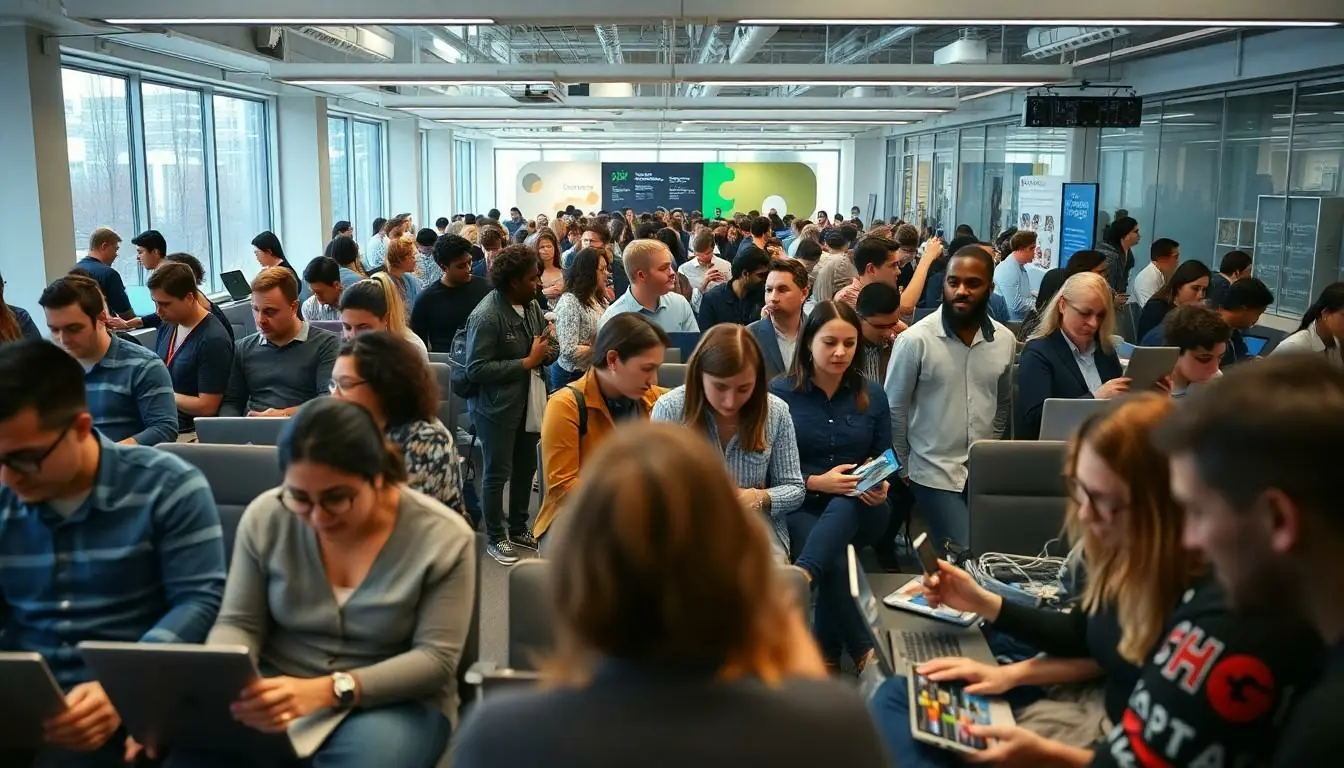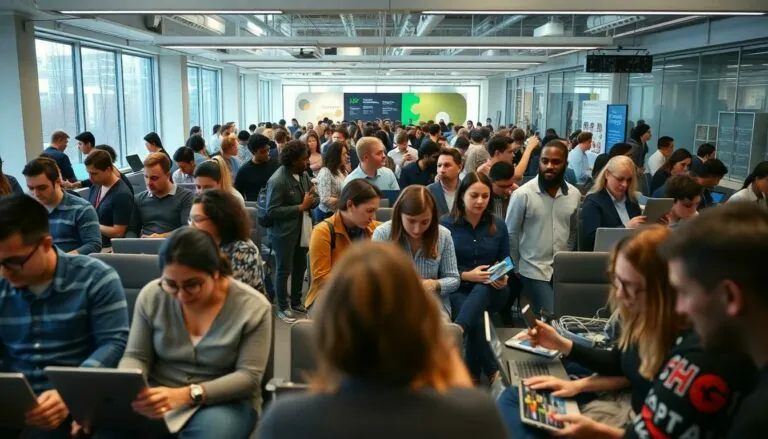In a world where digital conversations reign supreme, one chatbot decided to take a bold leap into the spotlight. ChatGPT, the AI marvel that can whip up poetry, solve math problems, and even crack jokes, unexpectedly found itself at the center of a digital drama. Picture this: a chatbot so powerful it made the internet collectively gasp, then promptly crash like a toddler on a sugar high.
What caused this virtual chaos? As users flocked to ChatGPT for answers, the sheer volume of interactions sent servers into a tailspin. It’s a classic case of “too much of a good thing,” proving that even AI has its limits. Dive into the tale of how ChatGPT not only sparked curiosity but also brought the online world to its knees—at least for a moment.
Table of Contents
ToggleOverview of ChatGPT
ChatGPT represents a significant advancement in artificial intelligence technology. This chatbot excels in various tasks, including generating poems, solving complex math problems, and delivering entertaining jokes. Such versatility attracted a massive user base, which led to skyrocketing interactions.
Users experience an engaging and fluid conversational style when communicating with ChatGPT. Each interaction demonstrates its ability to understand context and adapt responses accordingly. Consequently, ChatGPT serves as an educational tool, offering users assistance in learning and exploring new ideas.
High demand for ChatGPT’s services led to moments of digital chaos. Server issues arose due to the overwhelming influx of requests, exposing vulnerabilities even in sophisticated systems. Such incidents remind users that technology, while innovative, faces operational limitations.
The excitement surrounding ChatGPT reflects broader trends in artificial intelligence. Many organizations recognize its potential in customer service, content creation, and other fields. Users embrace ChatGPT, motivated by a desire for immediate, intelligent responses.
Despite the technical hiccups, ChatGPT continues to evolve and improve. Developers work diligently on enhancing its capabilities and addressing any functional issues. In this fast-paced digital landscape, the integration of ChatGPT into various applications showcases the ongoing evolution of AI technology and user interaction.
Key Events Leading to Downtime

Several pivotal events contributed to the recent downtime of ChatGPT, highlighting its operational limitations amid soaring popularity.
Technical Glitches
Technical glitches emerged as a primary cause of outages. These errors stemmed from the system’s inability to handle an unprecedented surge in requests. Some users experienced delays, connection issues, or complete service outages during peak periods. Frequent system errors indicated weaknesses in infrastructure. Developers undertaken immediate assessments aimed at diagnosing these problems and improving stability. Continuous monitoring and updates targeted critical areas, ensuring a more reliable service in the future.
Increased User Demand
Increased user demand placed considerable strain on ChatGPT’s capabilities. Millions of users flocked to the platform for various reasons, including academic assistance and entertainment. The rapid influx of visitors overwhelmed servers designed to accommodate smaller user bases. On top of this, simultaneous requests surged, further complicating the situation. Developers responded by scaling resources and optimizing response times. Adapting to user needs remained essential for maintaining service quality amid ongoing growth.
Impact on Users
The surge in ChatGPT’s user base significantly affected online experiences. Users faced disruptions due to overwhelming demand for services.
Disruption of Services
Service interruptions arose from technical glitches that impacted response times. Many users encountered errors and site accessibility issues during peak hours. Developers responded promptly, aiming to restore functionality quickly. Increased server loads contributed to slower performance, frustrating users hoping to engage with the AI. As developers scaled resources to manage traffic, system outages persisted intermittently. These difficulties highlighted existing limitations, sparking conversations about reliability.
User Reactions
Users expressed a mix of frustration and appreciation online. Many took to social media to complain about downtime, sharing their experiences. Some highlighted the chatbot’s impressive capabilities when it functioned smoothly, emphasizing its potential in education and entertainment. Acknowledging the excitement around AI, users remained optimistic about future improvements. Awareness of ongoing upgrades kept users engaged, even amid disruptions. The community’s feedback played a critical role in shaping developments, underlining the importance of user experiences in enhancing ChatGPT’s offerings.
Responses from OpenAI
OpenAI has responded to recent challenges with ChatGPT by implementing several strategic measures.
Measures Taken
In response to server outages, OpenAI prioritized enhancing infrastructure through improved server capacities. Engineers optimized load-balancing techniques to distribute traffic efficiently among servers. They also increased the number of simultaneous requests the system could handle, addressing user demands more effectively. Rapid bug fixes improved software stability, ensuring a smoother experience during peak times. Additionally, OpenAI introduced real-time monitoring to detect issues proactively, allowing for swift resolutions. User feedback played a vital role in shaping these updates, demonstrating the importance of community input in system development.
Future Plans
OpenAI’s future plans include expanding server resources significantly by investing in cloud infrastructure. Developers aim to enhance machine learning algorithms to improve response times and accuracy. Plans for regular updates promise ongoing improvements in stability, focusing on minimizing disruptions during heavy usage periods. OpenAI intends to collaborate with industry professionals to explore new technologies that boost system performance. Continuous evaluation of user feedback will guide future enhancements, affirming their commitment to user satisfaction. Integration of advanced features aims to maintain ChatGPT’s role as a leading tool in education and entertainment, fostering ongoing innovation.
The recent challenges faced by ChatGPT highlight the delicate balance between technological advancement and user demand. As it continues to attract a massive audience, the need for robust infrastructure and seamless performance becomes increasingly critical. OpenAI’s proactive measures to enhance server capacities and optimize system efficiency reflect a commitment to improving user experience.
Despite the hiccups, the enthusiasm surrounding ChatGPT remains strong. Users appreciate its capabilities and the potential it holds for educational and entertainment purposes. With ongoing improvements and a focus on user feedback, ChatGPT is poised to emerge from these challenges even stronger, solidifying its position as a key player in the evolving landscape of artificial intelligence.







